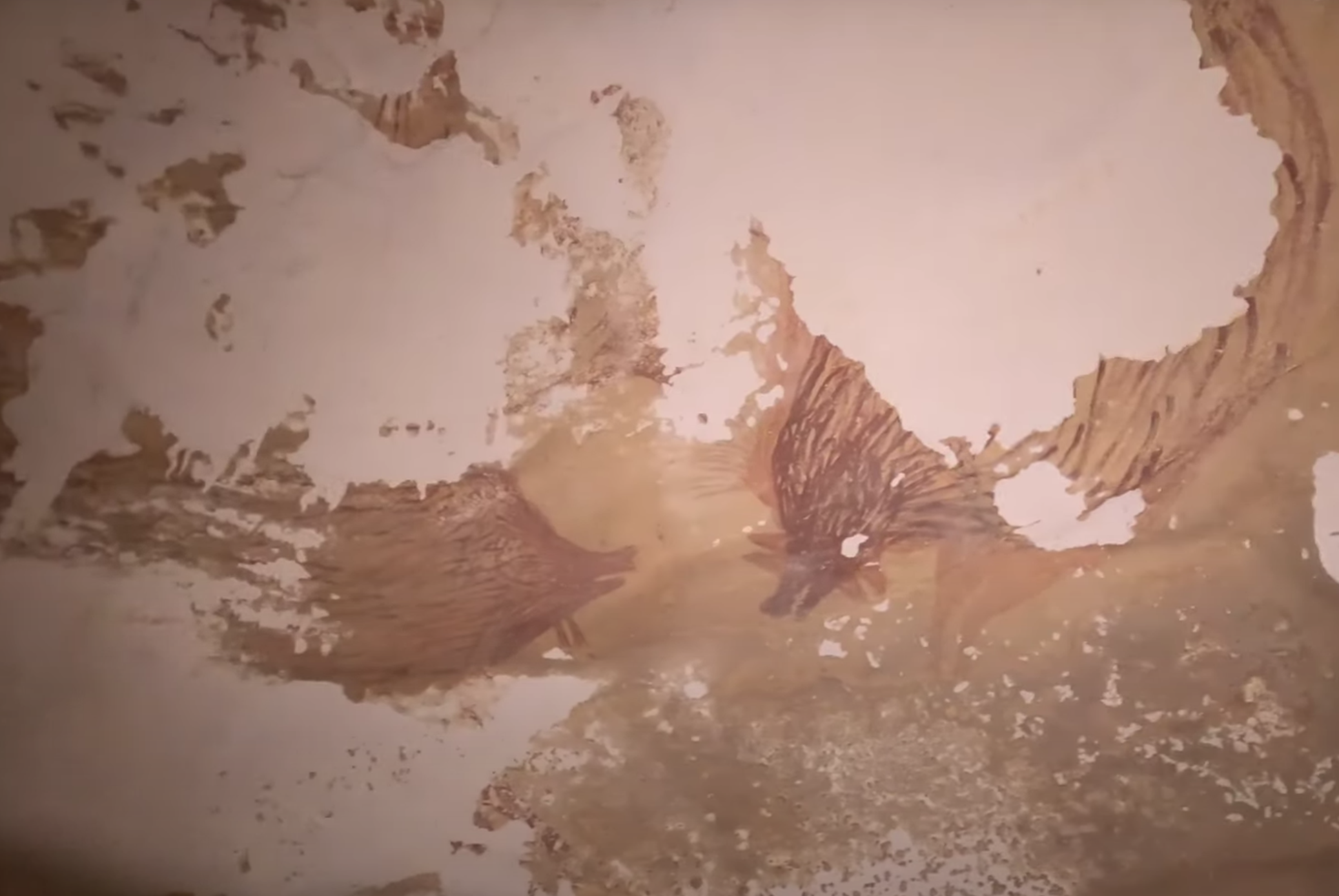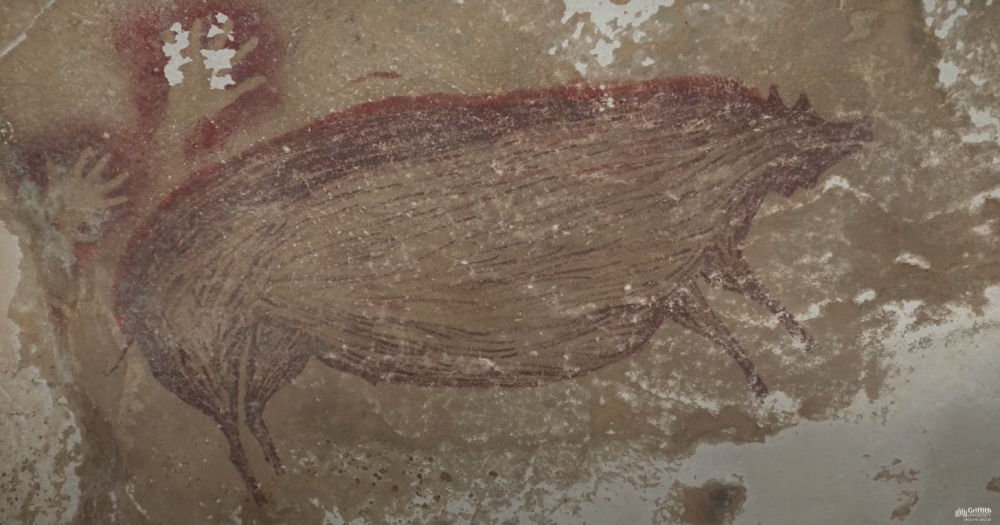Deep within a cave on the Indonesian island of Sulawesi, archeologists have discovered the world's oldest known cave painting.
According to The New York Times, researchers believe that the life-sized painting of a pig is at least 45,500 years old.
It was found in December 2017 in a limestone cave called Leang Tedongnge during a survey led by Griffith University graduate student Basran Burhan.
The same team of archeologists — made up of researchers from Griffith University and Indonesia’s leading archaeological research centre, Pusat Penelitian Arkeologi Nasional (ARKENAS) — had previously found other cave paintings on Sulawesi which were dated to be at least 43,900 years old.
Located near one of Indonesia's largest cities
In a video uploaded to YouTube by Griffith University, co-leader of the Griffith-ARKENAS team Adam Brumm described how the depiction of the Sulawesi warty pig was found alongside a scene of two other pigs engaged in some sort of social activity.
However, the full painting of the two other pigs was not preserved in its entirety.
 Image from Griffith University's Youtube channel
Image from Griffith University's Youtube channel
According to Brumm, the painting was made with mineral pigments.
The Sulawesi warty pig still lives on the island. Here's what it looks like in real life:
 Image from Sejarah Indonesia's Facebook page
Image from Sejarah Indonesia's Facebook page
"This site was a really special site," added Brumm.
"It's located in this hidden valley up in the highlands of Sulawesi. It's literally a stone's throw away from one of the largest cities in Indonesia."
The New York Times reported that Leang Tedongnge is only about 65km away from Makassar, a city with a population of 1.5 million people.
Mystery painter
There continue to be questions over the artist responsible for the paintings as no human skeletal remains of the same age have ever been found on Sulawesi.
It is therefore not clear if the paintings were made by anatomically modern humans or a different hominin.
Brumm, however, told The New York Times that he and his colleagues assumed that the painters were modern humans, “given the sophistication of this early representational artwork.”
Top image from Griffith University's YouTube channel
Totally unrelated but follow and listen to our podcast here
If you like what you read, follow us on Facebook, Instagram, Twitter and Telegram to get the latest updates.
